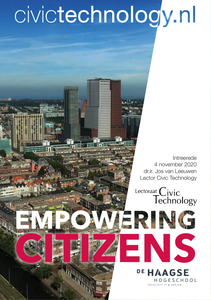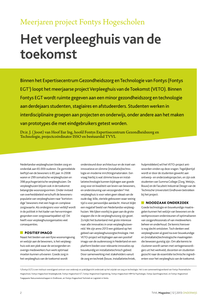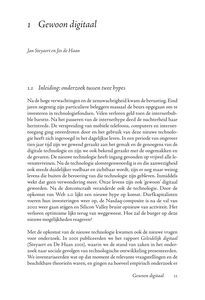BACKGROUND: Pre-term infants with bronchopulmonary dysplasia (BPD) are at risk of acquiring brain abnormalities. Combined with ongoing breathing difficulties, this may influence the development of their sucking patterns.OBJECTIVE: To determine the longitudinal development of sucking patterns from birth until 10 weeks' post-term age in pre-term infants with and without BPD.METHODS: The sucking patterns of 16 pre-term infants with BPD and 15 pre-term infants without BPD were prospectively assessed with the Neonatal Oral-Motor Assessment Scale. The infants were matched for gestational age (<30 weeks). We recorded approximately 12 feeding episodes per infant, from 34 until 50 weeks' post-menstrual age. We diagnosed the infants' sucking patterns as normal, dysfunctional, or disorganized. Then, we examined the development of the sucking patterns in relation to relevant clinical characteristics.RESULTS: Thirty (21%) of 142 feeding episodes of the pre-term infants with BPD and 36 (23%) of 156 of those without BPD were diagnosed as normal (non-significant). Of the abnormal patterns, 3 were diagnosed as dysfunctional and 229 as disorganized. Before term-equivalent age, definitely abnormal sucking patterns were more prevalent in the pre-term infants with BPD than in those without BPD: 69 (49%) and 47 (30%) episodes, respectively (χ(2) = 10.7, p < 0.01). In particular, the abnormal patterns including the item 'incoordination', defined as the inability to coordinate sucking and swallowing with breathing, were more prevalent: 36 and 15%, respectively (χ(2) = 6.37, p < 0.05). There was no difference between the two groups regarding the age at which they acquired normal sucking patterns. Relevant clinical characteristics did not influence the development of the sucking patterns.CONCLUSIONS: The developmental characteristic of sucking patterns in infants with BPD was that these infants were unable to coordinate swallowing with breathing. This was the case especially prior to term-equivalent age; after term-equivalent age, the development of sucking closely resembled that of pre-term infants without BPD.
DOCUMENT
In ons dagelijkse leven hebben we veel met technologie te maken, vaak met interactieve, informatie-gerichte technologie: als consument doen we online boodschappen – zeker in deze pandemische tijd; als reiziger in het openbaar vervoer plannen en betalen we onze reis met interactieve technologie – nu weliswaar even wat minder; als weggebruiker navigeren we op basis van technologie; en ons energieverbruik in huis wordt ‘smart’ gemeten en geadministreerd. Als burger staan we steeds vaker middels technologie in contact met overheden. Denk aan alle online communicatie met de overheid, zo als de belastingdienst en gemeenten die middels apps, websites en de ‘Berichtenbox’ van ‘MijnOverheid’ met burgers communiceren. En er wordt over burgers en ons gedrag al heel wat data verzameld, door gemeenten, de politie, door bijvoorbeeld de zorgsector. En ook in de publieke ruimte wordt data verzameld – met smart city technologie, zoals camera’s en sensoren – met als doel om de stad veiliger, efficiënter en leefbaarder te maken. Al die ‘big data’ maakt het mogelijk om inzichten te genereren – al dan niet met kunstmatige intelligentie – en besluiten te nemen. We gebruiken technologie ook om als burger zelf actie te ondernemen. Bij de overheid kunnen we met apps melden wat er op straat verbeterd of onderhouden moet worden. Met onze buren zitten we in een WhatsApp groep of NextDoor, om bij te dragen aan de leefbaarheid en veiligheid van de buurt. We kunnen met smart home tools of citizen science kits de luchtkwaliteit meten, binnenshuis, maar ook buitenshuis. We tekenen petities, doen mee aan peilingen en enquêtes. En social networking sites (SNS) worden intensief gebruikt, voor sociale en professionele relaties, maar ook om maatschappelijk actief te zijn, voor het organiseren van het samenleven in een buurt. We weten inmiddels dat social media ook een effectief kanaal zijn om de democratie te beïnvloeden. Burgers komen dus in aanraking met veel verschillende technologieën, met verschillende doelstellingen, resultaten en bijeffecten, en waaraan mensen in allerlei functies en rollen deelnemen. Wat centraal staat in het vakgebied Civic Technology is dat de technologie in dienst staat van het burgerschap.
DOCUMENT

Binnen het Expertisecentrum Gezondheidszorg en Technologie van Fontys (Fontys EGT1) loopt het meerjaarse project Verpleeghuis van de Toekomst (VETO). Binnen Fontys EGT wordt ruimte gegeven aan een minor gezondheidszorg en technologie aan derdejaars studenten, stagiaires en afstudeerders. Studenten werken in interdisciplinaire groepen aan projecten en onderwijs, onder andere aan het maken van prototypes die met eindgebruikers getest worden.
DOCUMENT

Het aantal ouderen in ons land neemt toe en mensen willen en moeten langer thuis wonen. Zo zal de verpleeghuiscapaciteit afnemen en de zorg thuis en zelfzorg toenemen. Ook kunnen mantelzorgers en zorgprofessionals baat hebben bij extra ondersteuning. Technologie kan hiervoor een oplossing bieden.
DOCUMENT

De bacheloropleidingen Verpleegkunde in Nederland staan voor de uitdaging het nieuwe beroepsprofiel Bachelor Nursing 2020 te vertalen naar het onderwijs. Een deel van het nieuwe curriculum gaat over de inzet van eHealth. In dit document worden 14 verpleegkundige beroepstaken omschreven waarbij eHealth wordt ingezet. Beschreven wordt welke kennis, vaardigheden en houding van een verpleegkundige worden gevraagd om elke eHealth-taak zelfstandig uit te voeren. Elke taak wordt gekoppeld aan kernbegrippen van Bachelor Nursing 2020 en aan relevante CanMEDS-rollen.
DOCUMENT

De toenemende vergrijzing vergroot de druk op het zorgstelsel. Om zo lang mogelijk zelfstandig thuis te kunnen wonen, is gezonde voeding van belang. Ouderen worstelen echter met, soms conflicterende, waarden die zij toekennen aan eten, zoals gezondheid, smaak en gezelligheid. Tegelijkertijd lukt het professionals onvoldoende om voedingszorg aan te laten sluiten bij de waarden van ouderen rondom ‘goed eten’. Daarvoor was een goed gesprek over de waarden van eten tussen ouderen en zorgprofessionals nodig. LinkedIn: https://www.linkedin.com/in/matthijs-fleurke-66279110/ https://www.linkedin.com/in/dorien-voskuil-9b27b115/
DOCUMENT

Wat zijn de belangrijkste inhoudelijke speerpunten van het lectoraat voor de komende jaren? Een belangrijk doel van deze rede is om dat uiteen te zetten. In hoofdstuk 2 wordt eerst kort beschreven hoe er vanuit verschillende perspectieven gekeken kan worden naar de interactie tussen mens en (zorg)technologie en hoe dit richting geeft aan de drie belangrijkste inhoudelijke thema’s van het lectoraat: mensgericht ontwerpen als voorwaarde om tot zinvolle (digitale) diensten en producten te komen, de aandacht voor sociale innovatie om de implementatie van digitale interventies succesvol te laten zijn en het belang van het onderbouwen en evalueren van deze interventies. Hoofdstuk 3 gaat in op de verschillende projecten en activiteiten die binnen in het lectoraat uitgevoerd (gaan) worden. We beschrijven hoe hiermee invulling gegeven wordt aan deze drie belangrijkste thema’s van het lectoraat. Tenslotte komt de kenniskring aan bod in hoofdstuk 4.
DOCUMENT
![Mensgericht ontwerpen als voorwaarde voor digitale innovatie in zorg en welzijn [inaugurele rede]](https://publinova-harvester-content-prod.s3.amazonaws.com/thumbnails/files/previews/pdf/20250506135734429102.aarde_voor_digitale_innovatie_in_zorg_en_welzijn_nhl_ste-thumbnail-400x300.png)
Zelfsturing vraagt om medewerkers die zelf initiatief nemen. Maar het vraagt ook om een nieuwe vorm van leiderschap. Het bewerkstelligen van een zelfsturende werkcontext is de sleutel tot succes. De leidinggevende in de rol van architect.
DOCUMENT

Nederlanders zijn gewoon digitaal Jaarboek ICT en samenleving 2007: Gewoon digitaal. Gewoner en intensiever gebruik van nieuwe media Internetgebruik van hoogopgeleiden is veelzijdiger en productiever dan van laagopgeleiden. Meer ouderen online, maar achterstand blijft groot. Belang van internet als informatiebron groeit Meer overheidsinformatie online Gebruik online gezondheidsinformatie stijgt Nederland is koploper met telewerken. ICT leidt niet tot meer werkdruk, maakt het werk wel interessanter Dit zijn de belangrijkste conclusies uit het vijfde Jaarboek ICT en samenleving: Gewoon dgitaal, dat op dinsdag 12 mei a.s. wordt aangeboden aan de Alexander Rinnooy Kan, voorzitter dan de SER. Het Jaarboek, dat verschijnt bij uitgeverij Boom, is een samenwerkingsproject van het Sociaal en Cultureel Planbureau (SCP), Fontys Hogescholen en het programma 'Maatschappij en de Elektronische Snelweg' van de Nederlandse Organisatie voor Wetenschappelijk Onderzoek (NWO-MES). Onder redactie van prof. dr Jan Steyaert (Fontys Hogescholen) en prof. dr Jos de Haan (SCP) gaan vooraanstaande wetenschappelijke onderzoekers nader in op de gevolgen van internet voor de samenleving. Gewoner en intensiever gebruik van nieuwe Het aandeel van de Nederlandse bevolking met thuis toegang tot internet steeg van 16% in 1998 naar 78% in 2005. Naast toenemende toegang is er sprake van intensiever gebruik, met tussen 2000 en 2005 meer dan een verdubbeling van de tijdsbesteding aan internet (van gemiddeld 1.8 naar 3.8 uur per week). Bovendien worden burgers steeds meer informatieproducent (via weblogs e.d.) naast de meer traditionele rol van informatieconsument. Gevarieerd internetgebruik van hoogopgeleiden Hoogopgeleiden gebruiken meer verschillende internettoepassingen dan laag opgeleiden. Bovendien gebruiken zij meer informatieve en zakelijke toepassingen, zoals actualiteit en nieuws, informatie over werk en vacatures, internet-bankieren, het online kopen en verkopen van goederen en het gebruik van overheidssites, dan laagopgeleiden. Lager opgeleiden gebruiken meer vermaakstoepassingen van het internet in het algemeen, en spelletjes, muziekuitwisseling en chatten in het bijzonder dan hoger opgeleiden. Meer ouderen online In 2005 was 78% van de bevolking met internet verbonden. Het aantal aansluitingen in de groep 55-64 jarigen ligt iets lager op 72%, de 65-74 volgen op grotere afstand (44%) en 75-plussers nog weer minder online (17%). Ook onder deze groepen is de verspreiding langzaam maar zeker toegenomen. In 2000 was namelijk 44% van de bevolking op internet aangesloten (55-64 jarigen: 31%; 65-74 jarigen 12% en 75-plussers 4%. Veel ouderen vinden zichzelf 'te oud' om te leren omgaan met ict. Ook veel ouderen geven aan dat de computer en internet te moeilijk zijn, of ze zien het voordeel of nut er niet van in. Ook financiële of fysieke beperkingen zoals een slecht zicht vormen voor sommige ouderen een belemmering. De veelvuldige verwijzingen naar internet in het dagelijks leven zijn soms een stimulans om internet uit te proberen, maar bij anderen juist aanleiding om te volharden in niet-gebruik. Een positieve grondhouding is van belang om verbinding te maken met internet. Internet belangrijker als informatiebron Steeds meer Nederlanders gebruiken internet om zich te informeren over uiteenlopende onderwerpen. In 2005 gebruikte 38% van de Nederlanders internet voor 17 gespecificeerde onderwerpen. Vijf jaar eerder was dat nog 23%. In 2005 was de televisie nog steeds veruit favoriet (92%) en ook het dagblad blijft populair (77%). Internet is na radio (47%) al wel teletekst (23%) en de opiniebladen (15%) voorbij gestreefd als infomatiebron. Meer overheidsinformatie online Steeds meer gemeenten bieden informatie (bekendmakingen, vergunningen, verordeningen en plannen) on line aan. Zo ontsloot in 2003 26% van de gemeenten een bestuursinformatiesysteem op de website, in 2005 was dit 79%. Gebruik online gezondheidsinformatie stijgt Het aanbieden en zoeken van gezondheidsinformatie via internet neemt aan belang toe. Centraal daarin staat een verwachting dat de patiënt beter geinformeerd is en een betere gesprekspartner is voor (huis)artsen. Nu toegang tot internet 'gewoner' is geworden, worden informatievaardigheden belangrijker, zoals het kunnen beoordelen van informatie op kwaliteit en relevantie. Nederland is koploper met telewerken. Nederland is met ongeveer 20% van de beroepsbevolking die met enige regelmaat thuiswerkt internationaal koploper telethuiswerken. Hoewel telewerken mogelijkheden biedt om arbeid en zorg gemakkelijker te kunnen combineren, wordt het zelden gebruikt als bewuste en structurele strategie om dit ook te doen. Het wordt eerder gebruikt als crisis¬management om tijdnood in het werk het hoofd te bieden. Het werk wordt interessanter door ICT Over de huidige invloed van ICT zijn werkenden van oordeel dat het werk er interessanter door is geworden. Ook vinden zij dat het leven door ict minder ingewikkeld is geworden. Werkenden zijn niet van mening dat zij door ict meer vrije tijd hebben gekregen of dat het tot minder werkdruk heeft geleid. Werkenden hebben wel positieve toekomstverwachtingen van de inzet van ICT. In hun ogen zal ICT in de toekomst in lichte mate bijdragen aan een aangenamer en overzichtelijker leven. Inhoud Jaarboek ICT en samenleving 2007: Gewoon Digitaal 1 Gewoon digitaal Jan Steyaert en Jos de Haan 2 De e-surfende burger: is de digitale kloof gedicht? Jan A.G.M. van Dijk 3 Senioren en internet: aansluiting of kortsluiting? Marion Duimel 4 De digitalisering van media- en informatiegebruik Jos de Haan en Frank Huysmans 5 E-werkenden in netwerken Erik Andriessen en Lambert van der Laan 6 ICT en arbeid: over de verwachtingen van tijdwinst, tijdsoevereiniteit en leuker werk Jelle Attema, Koen Breedveld, Andries van den Broek, Pascale Peters 7 Van gemeenschap via webnetwerk naar datawolk Marianne van den Boomen 8 Op zoek naar de e-democratische burger Arthur Edwards 9 De e-lerende burger Peter Sloep en Wim Jochems 10 ICT en de gezondheidzorg. Samantha A. Adams en Cécile R.L .Boot
DOCUMENT

Interview met drie young professionals die zijn afgestudeerd via het lectoraat Brainport bij de opleiding Vastgoed & Makelaardij.
DOCUMENT
